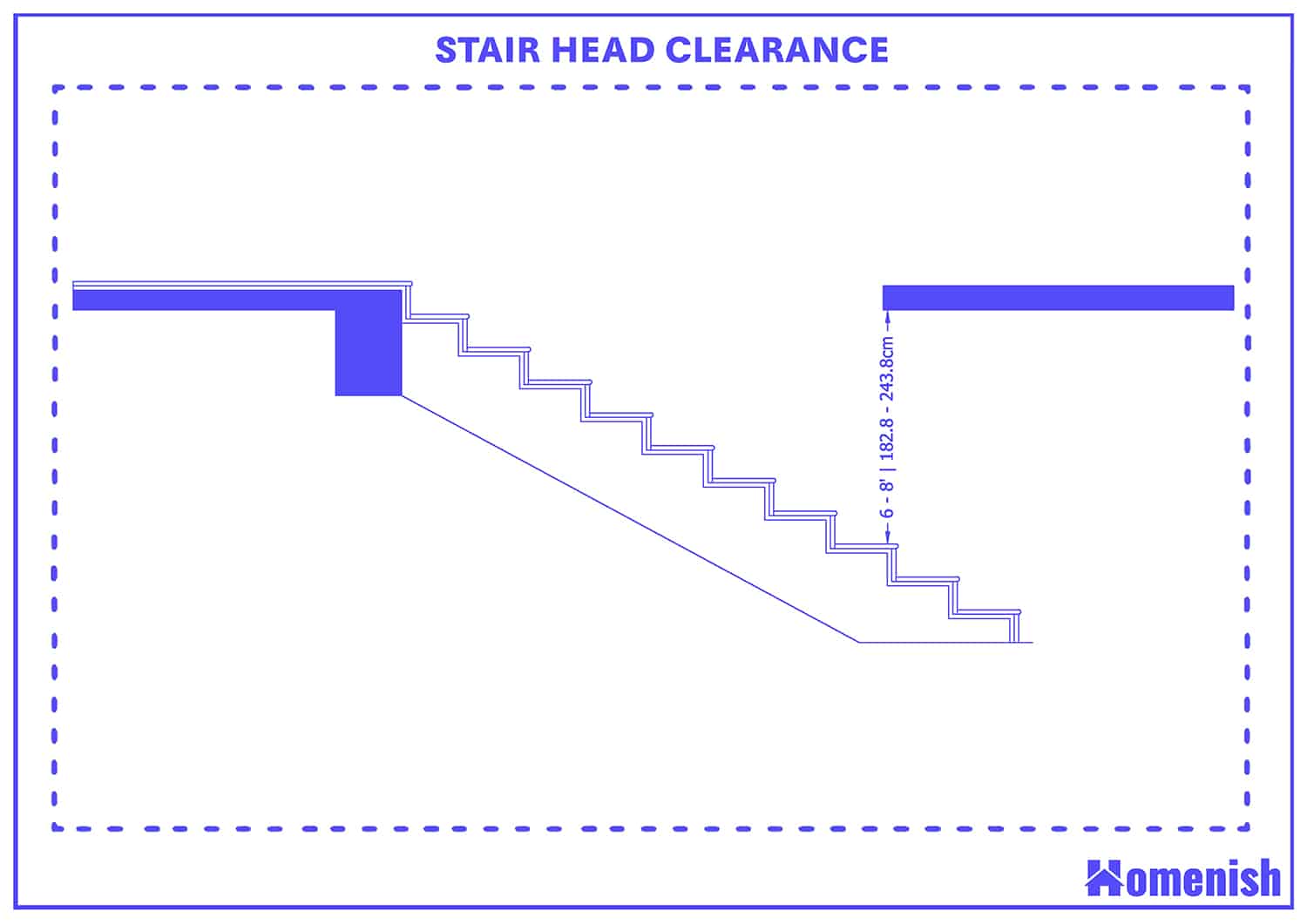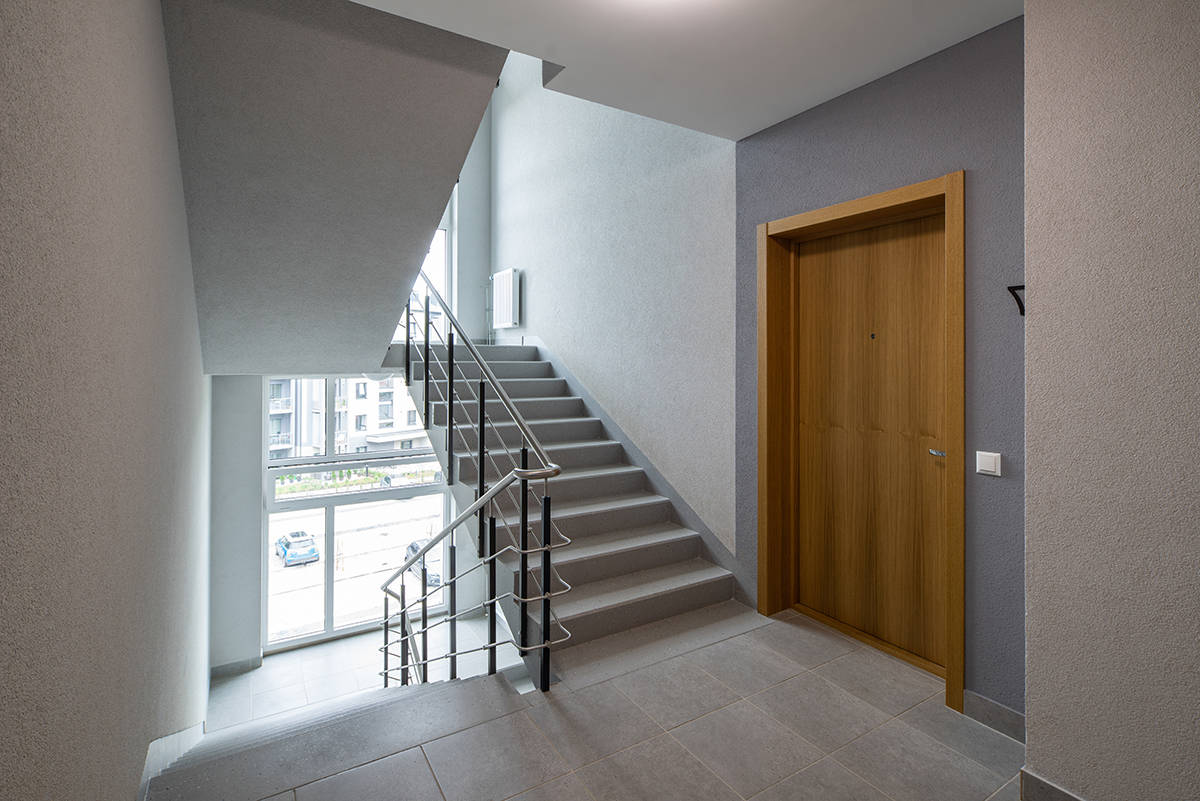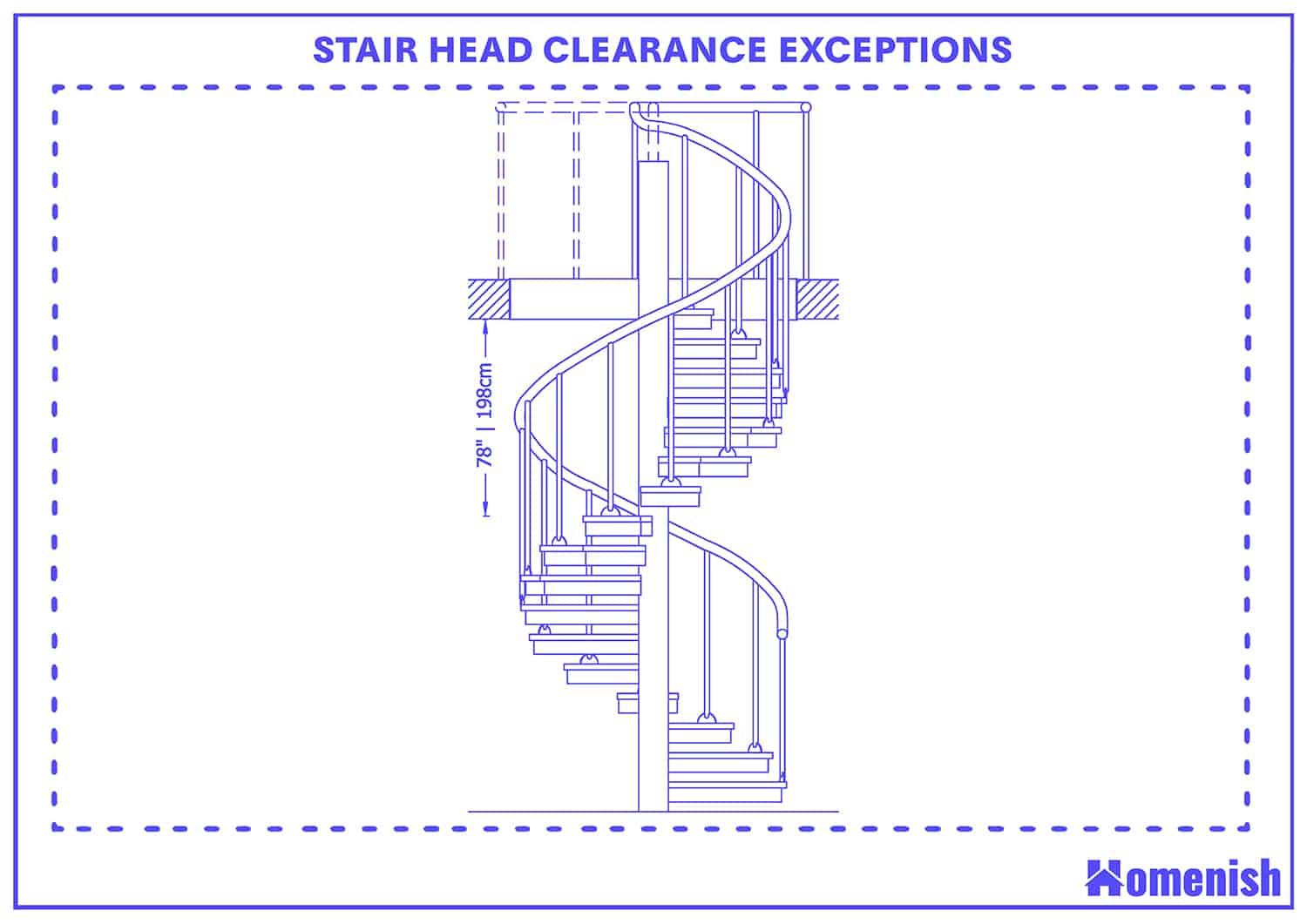Stair head clearance is a subject that needs to be thought carefully about if you are building your own home or if you are adding a staircase to the property.
If you are converting your attic into a room and will be installing a staircase to access the new attic space, or if you’re replacing an old damaged staircase with a new one, then you need to be aware of the rules and guidelines surrounding stair head clearance.
If you are a builder or work in construction, then stair head clearance is something you are probably already familiar with, but if you need to double-check any specific measurements regarding minimum head clearance on stairs, then we have all of the information you’ll need here.
Stair head clearance rules are important in order to prevent injury to people when they are using the stairs. An appropriate clearance will ensure that people can ascend and descend the stairs without the risk of their head banging into an overhead ceiling or joist.
Since stairs are a leading cause of accidents and injuries inside buildings, this is a part of construction that has been looked at closely by experts in order to minimize the incidence of such events.
These rules must be adhered to for both residential and commercial properties for the protection of anyone who uses them.
The minimum clearance required on a stairhead is determined by the Occupational Safety and Health Administration, the International Building Code, and the International Residential Code.
They have deemed that stair head clearance needs to be a minimum of 6 feet and 8 inches at all points. This is the equivalent of 80 inches, 2032 mm, 203cm, or 2 meters and 3 cm.
The measurement is taken from the edge or tip of each stair tread in a straight vertical direction. The height of the ceiling or any building structures overhead must be at least 6 feet and 8 inches away from any tread on the stairs.
This clearance ensures that the vast majority of people using the stairs will be free from any obstacles that may hinder their use of the stairs or cause potential injury.
Stair Head Clearance Across the World
A minimum stair head clearance is either required or recommended by most building authorities across the world. The International Building Code is a code that was set up by the International Code Council in the United States. This is a group that determines safety codes that much of the world also adhere to.
The International Building Code is seen to be upholding good building practices, and so many other building regulations around the globe are based on these or follow the same guidelines.
This means that the minimum stair head clearance set by the IBC is also the minimum stair head clearance required in most other countries around the world, including the United Kingdom, which also subscribes to the codes set by the ICC and the IBC.
Stair Head Clearance Exceptions
There are some instances where the minimum stair head clearance regulations do not apply, though these instances are rare. One of these instances is when spiral staircases are used inside a building. For spiral staircases, the minimum head height clearance is a few inches less than the standard head height clearance required for most staircases.
Both the Occupational Safety and Health Administration and the International Building Code state that for spiral staircases, a minimum head height of 78 inches is necessary.
This equates to 6 feet and 6 inches, 1981 mm, 198 cm, or 1 meter and 98 cm. Another exception is for basement stairs. In most cases, basement stairs must meet the same requirements as other stairs regarding the minimum head height clearance; however, in certain circumstances which pertain to bulkhead enclosure stairways, these do not need to be adhered to.
Other Staircase Requirements
The minimum head clearance is not the only thing that needs to be considered when constructing stairs. The total maximum height for a staircase is also an important rule to be aware of because if you plan to create a staircase longer than the maximum allowed, then you will also need to make allowances for a landing area to break up the stairs.
The total maximum height of a staircase should be 12 feet, from the ground level to the next landing level or end of the staircase. If the staircase is longer than 12 feet, then it will need to be broken up by landing areas.
Another requirement for staircases is the minimum widths and lengths. These rules are put in place to ensure stairs are safe to use by the majority of people. Stair tread width is sometimes mistaken for stair tread depth. The width is measured from the left to the right or vice versa.
The width of a stair tread is recommended to be at least 34 inches across, though in most cases, a minimum width of 36 inches is adhered to. When it comes to the distance between two walls on a staircase, this should be a minimum of 36 inches from one wall to the other at all points above the handrail height up to the ceiling. This ensures unobstructed head height at any point on the staircase.
The exception to this is emergency staircases which will need to have a minimum width of 44 inches. When adding handrails to your staircases, you should also be aware that these have to follow certain guidelines to ensure they don’t inhibit the stairs and make them potentially unsafe.
When a handrail is added on both sides of a staircase, it should project into the stairway at a maximum of 4 and a half inches from each wall. When a staircase has a handrail on just one side, then the rules are slightly different. In this instance, the clearance between both walls beneath the height of the handrail will need to be a minimum of 31.5 inches instead of the usual 34 inches required.









